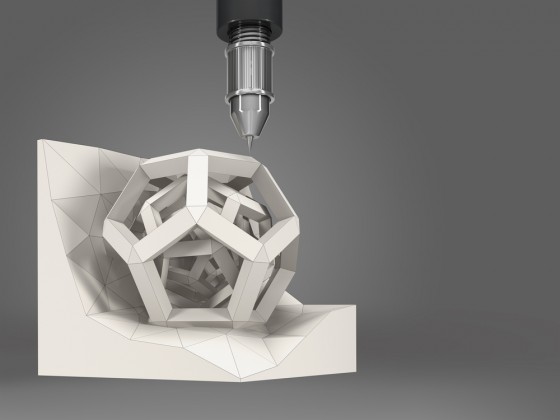 NEW ORLEANS—One of the most promising new technologies to hit the wider market in recent years, 3D printing is poised to revolutionize manufacturing as we know it. Otherwise known as additive manufacturing, 3D printing allows users to print almost anything they can dream up, including toys, machine parts, clothing, food, and prosthetic (as well as actual) body parts. There even companies that can print a lifesize, 3D model of your unborn fetus using ultrasound scans.
NEW ORLEANS—One of the most promising new technologies to hit the wider market in recent years, 3D printing is poised to revolutionize manufacturing as we know it. Otherwise known as additive manufacturing, 3D printing allows users to print almost anything they can dream up, including toys, machine parts, clothing, food, and prosthetic (as well as actual) body parts. There even companies that can print a lifesize, 3D model of your unborn fetus using ultrasound scans.
Of course, as with any new technology, there are many risks to consider and just as many unanswered questions about how to address those risks. At an educational session this morning at the RIMS 2015 Annual Conference & Exhibition, Cynthia Slubowski, head o f manufacturing at Zurich, Lisa Cirando, and attorney with Jones Day and Toni Herwaldt, risk manager at Kraft Foods, provided a risk checklist, outlining at the wide range of risks and questions facing those in the 3D printing space and those whose industries will be impacted by this new technology:
Product risk. Since 3D printing changes the traditional manufacturing model, industries will need to determine who owns a 3D printed product and in the event of an accident how will liability be apportioned?
Technology risk. Who owns the software and designs used to create products, particularly when users can make endless customizations?
Operations risk. How will 3D printing impact power supplies (the printers generate a lot of heat during operation), and how will the possible toxicity of ingredients and their byproducts be addressed. In addition, what are the business interruption and transportation risks?
Cybersecurity risk. How do you protect you designs and formulas? How do you prevent counterfeiting?
Environmental risk. How do you address exhaust, housing and disposal issues?
Contract risk. What kind of risk transfer or licensing agreements do you want to have in place?
Insurance risk. Do you have the appropriate coverage and where will it be coming from?
Strategic risk. How do you handle reputation and intellectual property issues? What happens to your product development lifecycle management?
Supply chain risk. Does your supply chain risk increase or decrease?
Market risk. What differentiates your product? What happens to your geographical risk?
